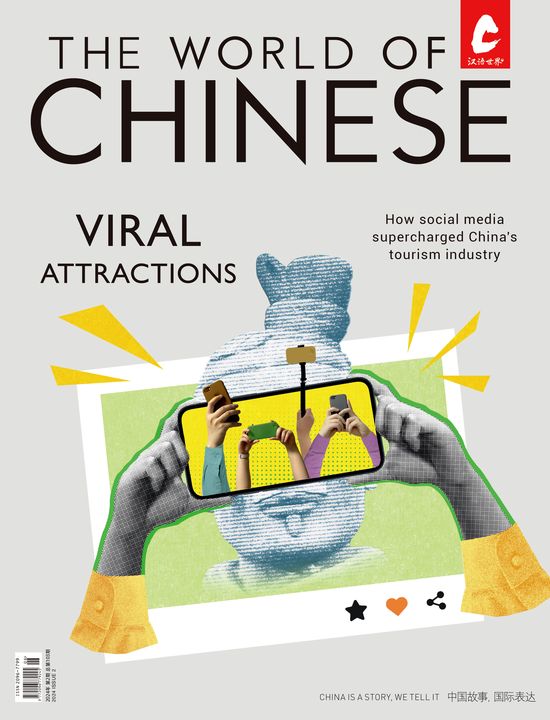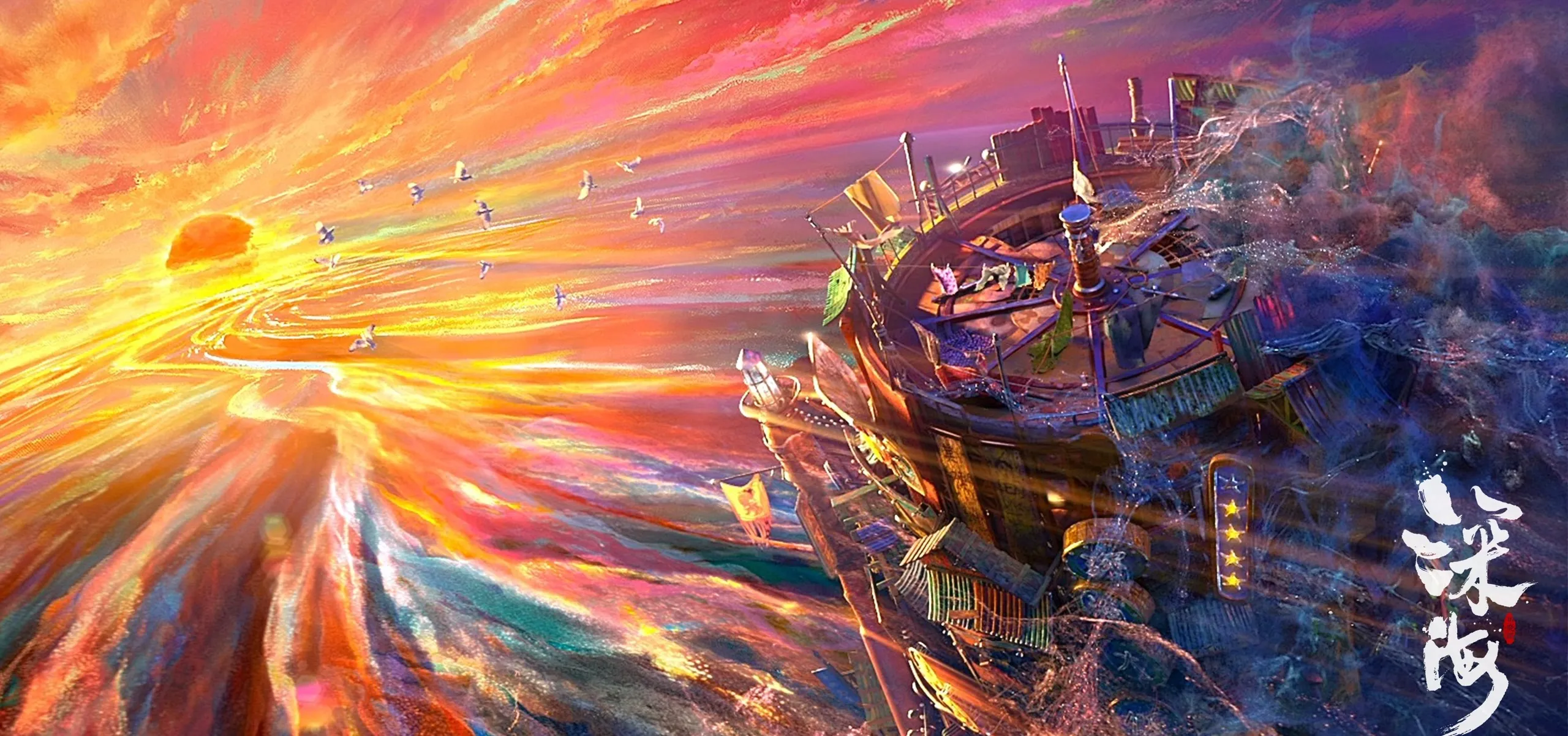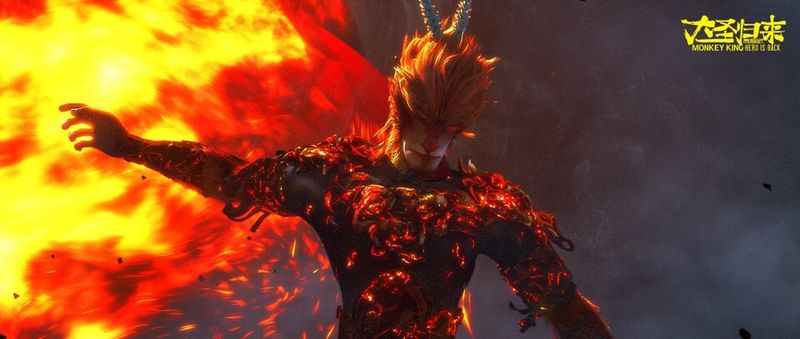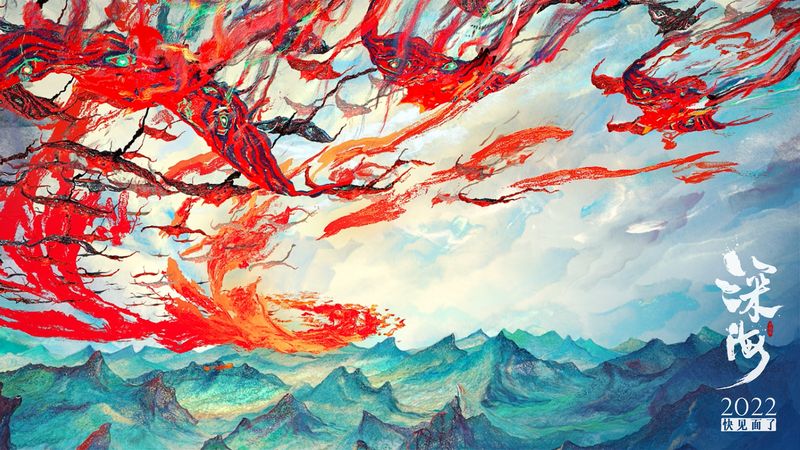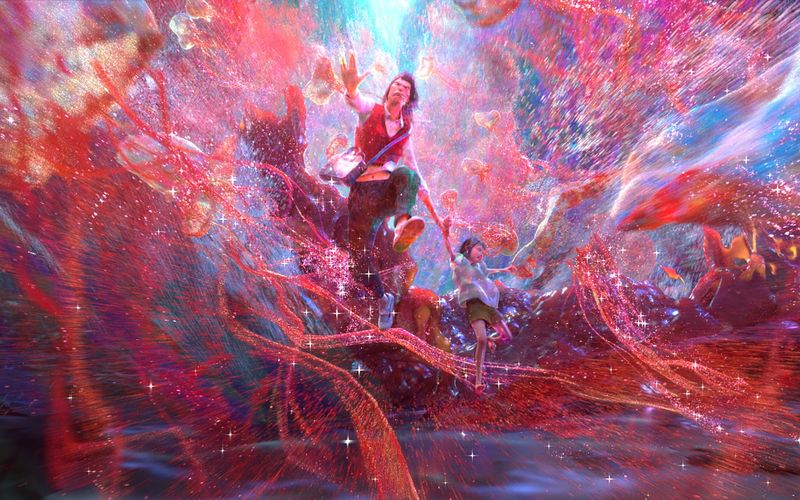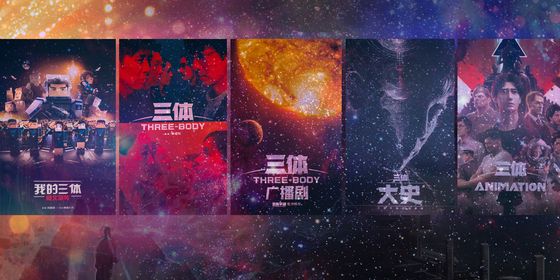Despite room for improvement in the script, Tian Xiaopeng’s “Deep Sea” brings Chinese animation to a whole new level
As Shenxiu wakes one morning from uneasy dreams, she finds herself transported to the middle of a vast sea, floating on a giant inflatable duck. This is the beginning of writer-director Tian Xiaopeng’s new animated film—and the least miraculous part of its young protagonist’s journey.
The story of Deep Sea follows Shenxiu, a depressed young girl abandoned by her mother and neglected by her father who’s remarried and had a son. During a cruise with her father’s new family, a sea spirit brings her into a dreamy underwater world full of life and color and on board the Deep Sea submarine restaurant where she meets its clownish head chef, Nanhe, and his adorable crew of sea otters and walruses.
The sea spirit seems to possess both the solution to saving Nanhe’s debt-ridden business—the experimental menu offering oyster ice creams and chocolate sausages might not be for everyone, after all—and the knowledge of Shenxiu’s mother’s whereabouts. But the magical creature escapes and the motley crew of seafarers embark on a perilous journey to its home, all while being threatened by a slimy red monster that engulfs everything in its path.
This crimson terror becomes an embodiment of sadness and loneliness, weaving a darker, somewhat puzzling side of the story line into the wonders of the sea domain and its visual spectacle. In the denouement, most of these pieces fall into the right places and make sense, except for the resolution of Shenxiu’s character. The somber subject matter of depression is handled haphazardly and turned into an effective but disappointing tearjerker right at the end, leaving Shenxiu without credible character development in what’s supposed to be her coming-of-age story.
Due to this flawed ending that leaves much to be desired, Deep Sea has been met with a lukewarm reception. As of January 31, the movie has a decent but unremarkable score of 7.3 out of 10 on review platform Douban. However, despite the ample room for improvement in the writing department, the true significance of Deep Sea lies not in its story, but in the innovation it brings to Chinese animation.
While most previously successful homegrown cartoon films have turned to classical literature and mythology for inspiration, including Tian’s own previous hit Monkey King: Hero Is Back (2015) which is adapted from Journey to the West, Deep Sea is rooted in imagination. But no story is an island. The film’s underwater realm seems rich with influences. The sea spirit is reminiscent of No-Face from Studio Ghibli’s acclaimed animation Spirited Away. Both are semi-transparent black creatures that can grow larger, cause destruction, and are exploitable for coveted resources: while No-Face can alchemically conjure gold, the sea spirit produces an appetite-stimulating hallucinatory goo (yes, there’s plenty of potty humor in the film). Also apparent are allusions to the singing sirens in Greek mythology and to the Biblical story of the Red Sea crossing (in one scene, Nanhe literally parts the sea to escape from the red monster).
This is not the first time director Tian Xiaopeng has set a benchmark in contemporary Chinese animation history. Seven years ago in Hero Is Back, instead of offering yet another tale of the mighty warrior, Tian portrayed the Monkey King as someone with weaknesses and insecurities, which resonated with contemporary audiences. This imaginative adaptation renewed the creative and financial potential of the animation industry which has not seen much life since bidding farewell to its “golden age” in the last century. Not only did Hero Is Back become the highest-grossing Chinese animation of all time with 956 million yuan in box office earnings, it was also enthusiastically embraced by audiences as indicated by its 8.3 rating on Douban.
It was followed by other critically and financially successful animated films such as Ne Zha and I Am What I Am, which were the highest-rated Chinese movies on Douban in 2019 and 2021, respectively. The former is also the highest-grossing non-US-made animated film in history with 5 billion yuan at the global box office—more than five times that of Hero Is Back.
Even then, however, the quality of computer-generated imagery in the majority of Chinese animations, especially 3D films, has lagged behind that of their counterparts in the US and Japan. For a telling example, look no further than the recent uproar and ridicule over the highly anticipated adaptation of The Three Body Problem, in which the protagonist is rendered with four finger joints. But the elegant craftsmanship in Deep Sea shows the potential of a next-level Chinese animation that goes far beyond these shoddy visuals.
In this vivid dreamlike film, Tian and his creative team strive for a distinct look. To construct a world hitherto unparalleled in Chinese animation, they turn to Chinese ink wash painting (水墨画) for inspiration. Emerged in the Tang Dynasty and later spread to Japan, this type of painting employs the xieyi (写意, literally “writing atmosphere”) style of freehand brushwork that seeks to capture the essence or spirit of its subject, as opposed to the gongbi (工笔, or “fine brushwork”) style that emphasizes careful, detailed imitation of outward appearances.
The film’s aquatic universe is rendered intensely vibrant by a special technique called “particle ink.” As explained in the film’s behind-the-scenes documentary, this technique is key to bringing about the xieyi effect featuring countless specks of animated grainy dust—as many as 2 billion in one scene—that constitute much of the underwater world in Deep Sea. From the floating tentacles of jellyfish to the sprays of sea waves, the objects and environments surrounding the characters rendered through particle ink flow freely in rich splashes of color and fluid motion, almost blending into each other in a fantastical way. At the same time, the animators pay a stunning level of attention to minute details, especially in the characters who are created in realistic 3D animation—one can literally see and count the skin pores on Shenxiu’s face in closeup frames.
What comes after the film proper makes this achievement all the more admirable. The almost complete absence of foreign animation studios in the credits seems to promise a creative and technical revitalization of the domestic animation sector.
Hero Is Back was named Best Animation at the domestic Golden Rooster Awards in 2015. Now in 2023, Deep Sea is going global. The film is set to have its international premiere in a competitive sidebar of the prestigious Berlin International Film Festival in February.
Regardless of whether it wins a prize, Deep Sea has secured its place in the history of Chinese animation. Now, we wait for the next animated film—one that can combine stunning visuals and a compelling story with well-developed characters—and hope it doesn’t take another seven years.
Images from Deep Sea
